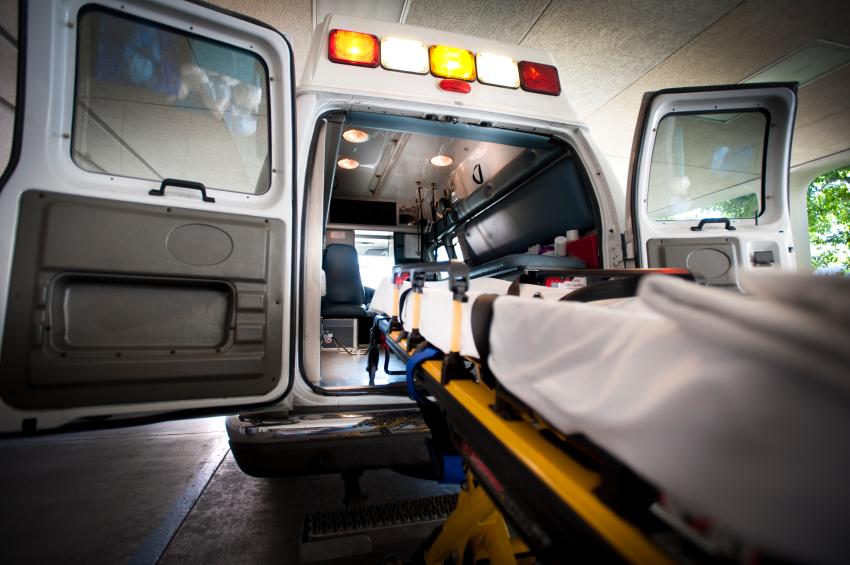Texas officials revealed more details about an Ebola case announced yesterday, noting that the man revealed his travel history during an emergency department (ED) visit 2 days before his hospitalization and that five schoolchildren are among the contacts being monitored.
The city of Dallas said it has activated its emergency operations center at the level 2 high readiness level and is working closely with county and federal health officials. At a media briefing today, aired live by WFAA, the ABC affiliate in the Dallas-Fort Worth area, Texas Governor Rick Perry said, "This is all hands on deck. Everyone has their marching orders."
Yesterday federal and state health officials said the man who had traveled from Liberia got sick 4 days after arriving in the United States and first sought clinical care 2 days later, on Sep 26. He was hospitalized on Sep 28, returning to the facility by ambulance.
Travel history revealed
In the wake of yesterday's announcement, questions have swirled about why his travel history didn't trigger Ebola suspicions earlier, at a time when his contact with others could have been minimized and his care begun earlier.
Mark Lester, MD, executive vice president and Southeast Zone clinical leader at Texas Health Resources, a health system that operates Texas Health Presbyterian Hospital, where the patient was initially seen and is now being treated in isolation, said the man is in serious but stable condition.
His travel history was part of a checklist that was in place several weeks before the patient was seen. Lester said a nurse asked the question, and the patient volunteered that he had traveled from Africa. Lester said, however, that the information was not fully communicated to the complex care team working in the ED that day, and the information was not factored into the patient's care plan.
Lester said the patient's only symptoms were fever and abdominal pain, and that the ED staff thought the patient likely had a low-grade viral infection. News media, however, have widely reported that he was prescribed antibiotics.
Hospital response called 'textbook'
David Lakey, MD, commissioner with the Texas Department of State Health Services (TDSHS) said authorities are looking at possible exposures in the hospital ED setting.
Edward Goodman, MD, an epidemiologist at Texas Health Presbyterian, said the patient did not have vomiting and diarrhea at his first ED visit, making is less likely that could have passed the virus. When the man returned on Sep 28 and was hospitalized, however, appropriate isolation measures were taken, Goodman said.
In response to questions about the hospital staff's initial handling of the man's travel history, Dallas County Judge Clay Jenkins said, "We're going to be transparent. There are no perfect responses, but this was a textbook response," he said. "We have done everything the CDC has asked us to do."
Complex contact tracing
Jenkins said health officials are facing a complex process of working with the community where the patient was staying with a family, an area of town where 33 different languages are spoken and is home to 25,000 people. He added that health officials want to craft their contact tracing and 21-day home monitoring messages in a thoughtful way that doesn't drive people underground, similar to what occurred in some of West Africa's outbreak regions.
Christopher Perkins, DO, MPH, Dallas County Health and Human Services (DCHHS) medical director and health authority, said the initial group of close contacts to be monitored includes 12 to 18 people, and that the investigation has expanded to identify more possible contacts.
Five of the contacts are children who attend four different schools—a high school, a middle school, and two elementary schools, said Dallas Independent School District (DISD) Superintendent Mike Miles. He said none of the children are showing symptoms. They could have been in contact with the patient over the weekend and attended school earlier this week but have been asked to stay home for 21 days during the symptom-monitoring period.
Out of an abundance of caution, Miles said the district is sending notices to staff and families and to allay fears will have extra health and custodial staff at the effected schools for the next couple weeks.
DISD today launched a health update Web page to keep school families informed about Ebola. In a notice, the district emphasized that because the students didn't have symptoms, "there is nothing to suggest that the disease was spread to others including students and staff." The district established a recorded hotline to provide updates and said it is regular contact with city, county, and federal health officials.
CDC presence
The US Centers for Disease Control and Prevention (CDC) said today that 10 of its experts have arrived in Texas to help investigate the nation's first Ebola case. In an e-mail statement to journalists the agency said the team includes three senior scientists who have public health investigation and infection control expertise, a communications officer, five epidemic intelligence service (EIS) officers, and a public health advisor.
The CDC also issued some general reminders to travelers and health providers. It urged travelers from the outbreak nations to monitor their health for symptoms and for providers to take a travel history on any person with viral infection symptoms. It said providers should consider Ebola if patients traveled to the outbreak region and have a fever greater than 101.5°F, severe headache, muscle pain, diarrhea, vomiting, stomach pain, or unexplained bruising or bleeding.
See also:
Oct 1 DISD health update page
City of Dallas Ebola page
Sep 30 CIDRAP News story "US Ebola case confirmed in traveler from Liberia"

















